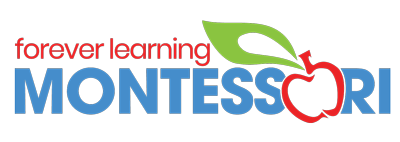If you're new to Montessori education, it can be challenging to grasp the concept and understand its benefits. The Montessori method is vastly different from traditional schooling, and you may wonder how it could benefit your child's education. Fortunately, our team at Cy-Fair Montessori School is here to help you gain a better understanding of this approach. In this introductory guide to the Montessori method, we'll walk you through the basic principles and highlight how your child could gain lifelong learning experiences that extend beyond the classroom.
Introduction to the Montessori Method
What Is the Montessori Method?
The Montessori method is an educational method originally developed by Dr. Maria Montessori. Based on Dr. Montessori’s scientific observations of child development, this approach focuses on fostering the development of the child as a whole — physically, mentally, emotionally, and socially. Its foundational idea is that children are naturally curious and capable of independently learning when allowed to explore freely. With more than 100 years of success across the globe, the Montessori method is widely accepted as an effective educational method for preschool and beyond.
The Montessori Classroom
The Montessori classroom is specially designed to allow the child to explore independently. The space is open, tidy, simple, and aesthetically pleasing. The environment is designed to be proportional to a child’s height, with low shelves, tables, and chairs they can reach easily without assistance, and laid out so they can sit by themselves or in a group. There are different theme areas, and children are allowed to move freely anywhere they choose and work at their own pace. There is a focus on teaching the children skills to solve conflicts on their own, giving them the freedom to explore and fostering social skills and self-discipline. The Montessori preschool classroom features mixed ages and is divided into two groups — those younger than three years old and three-to-six years old.
Tangible Materials
The materials in Montessori classrooms are designed to facilitate an experimental environment — where manipulating concrete objects leads to abstract thinking and attainment of knowledge that fosters curiosity and a desire to learn more successfully than a teacher simply reciting facts. The materials allow the child to independently explore. In addition, each material is designed to introduce one specific variable or concept without modification. They are also chosen because they have a “control of error,” meaning the material will show the child if it is used correctly and an adult doesn’t have to intervene to explain. This helps children learn for themselves and creates more self-confidence.
The Montessori Teacher
The Montessori teacher is also different from traditional instructors. They are there to observe the child as they move freely about the environment and to offer opportunities to work towards a purpose. The idea is to intervene as little as possible. There are no rewards or punishments in a Montessori classroom. Instead, each child is to develop skills and acquire knowledge for a sense of their own self-satisfaction, not for any external validation. Children are responsible for their own learning — not the teacher — in order to foster self-worth and natural curiosity.
As you can see, a preschool using the Montessori method offers a unique learning environment for children under six. If you’re interested in learning more about our Montessori preschool in Houston, TX, and our childcare program, please get in touch with us at Cy-Fair Montessori School today to schedule a tour!
